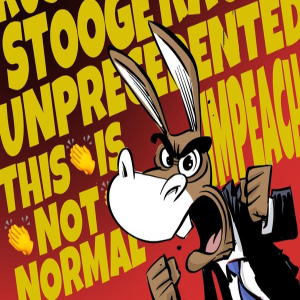Editorial: Still figuring out Medicare open enrollment? good luck
Published in Op Eds
To the stalwart seniors reviewing their Medicare coverage this fall: Godspeed. The open-enrollment process has become so convoluted that almost 70% of beneficiaries don’t bother to compare their options. Many are opting to migrate to Medicare Advantage, a simpler, privately run alternative paid for by the government. By 2034, more than 60% of seniors will be enrolled, up from about half today.
The popularity of Medicare Advantage would be good news if not for its exorbitant cost. The government spends 22% more on MA beneficiaries than similar enrollees in the traditional program, amounting to $83 billion annually. MA beneficiaries, in return, enjoy more streamlined coverage and generous benefits while paying little or nothing in premiums.
Unfortunately, Medicare’s fiscal state doesn’t leave much room for such extravagance. Its main trust fund is slated for insolvency by 2036. Total expenditures reached $1 trillion last year — some 16% of the federal budget — up from $575 billion a decade earlier. The demographics are similarly unfavorable: As the population ages, fewer workers will fund the program through payroll taxes. Demand for costly new medicines and technologies, meanwhile, is only rising.
Lawmakers have taken steps to rein in MA spending, including a practice known as upcoding, which inflates insurer payments. They’re also increasing scrutiny of care denials. Yet little’s been done to address the deficiencies in the traditional program that have spurred the flight to MA.
Medicare, the federal health plan for seniors, was created in 1965. It started with Parts A and B for hospital and doctor services. Over time, Congress added and standardized supplemental benefits, including Part D for prescription drugs and Medigap, which helps seniors cover out-of-pocket expenses. Both are optional and run by commercial insurers, though the government helps pay for Part D. (Medigap is financed by premiums.) Medicare Advantage is considered Part C.
Each benefit in this patchwork abides by its own rules and imposes different costs. Part A typically has no premium and a high deductible; Part B has a moderate premium and lower deductible, with a 20% coinsurance rate for most visits. Neither has an out-of-pocket maximum. The average beneficiary can then choose from 10 Medigap policies and no less than 21 stand-alone Part D plans.
MA, by contrast, is a one-stop shop. It bundles hospital and doctor visits and prescription drug coverage with perks such as vision, hearing and dental care, while caps on out-of-pocket spending eliminate the need for Medigap. The trade-off is a more limited provider network and restrictions on care. (Traditional Medicare seldom requires so-called prior authorization, and almost all doctors nationwide participate.) Yet satisfaction scores remain high.
The choice between a larger network with higher out-of-pocket costs (Medicare) and a narrower one with lower costs (MA) isn’t always an obvious one for a senior on a fixed budget. And the system’s overriding complexity makes choosing much harder. As things stand, it often amounts to high-stakes guesswork.
Restructuring parts of traditional Medicare might help. A single deductible and out-of-pocket maximum for Parts A and B would simplify seniors’ choices and provide more certainty about their costs. A higher deductible in the traditional program would be a reasonable concession for lower premiums, copays and coinsurance, and could lessen the need to purchase Medigap policies. As for Part D, the complexity of adding the privately run program may not outweigh the benefits, as seniors may prefer to keep their choice of plans. A better alternative would be to update the Medicare Plan Finder tool to consolidate pricing information. (The last update — in 2019, for a relatively modest $11 million — predated significant advances in automation and analytics.) Increasing the paltry budget for in-person help, now 85 cents per beneficiary, would also be worthwhile.
Simplifying Medicare is no simple task. But it would increase competition, save taxpayers money and protect the solvency of a critical government program. It’s also the right thing to do for the 65 million seniors who currently face a maddening array of ambiguous choices.
____
The Editorial Board publishes the views of the editors across a range of national and global affairs.
©2024 Bloomberg L.P. Visit bloomberg.com/opinion. Distributed by Tribune Content Agency, LLC.




























































Comments